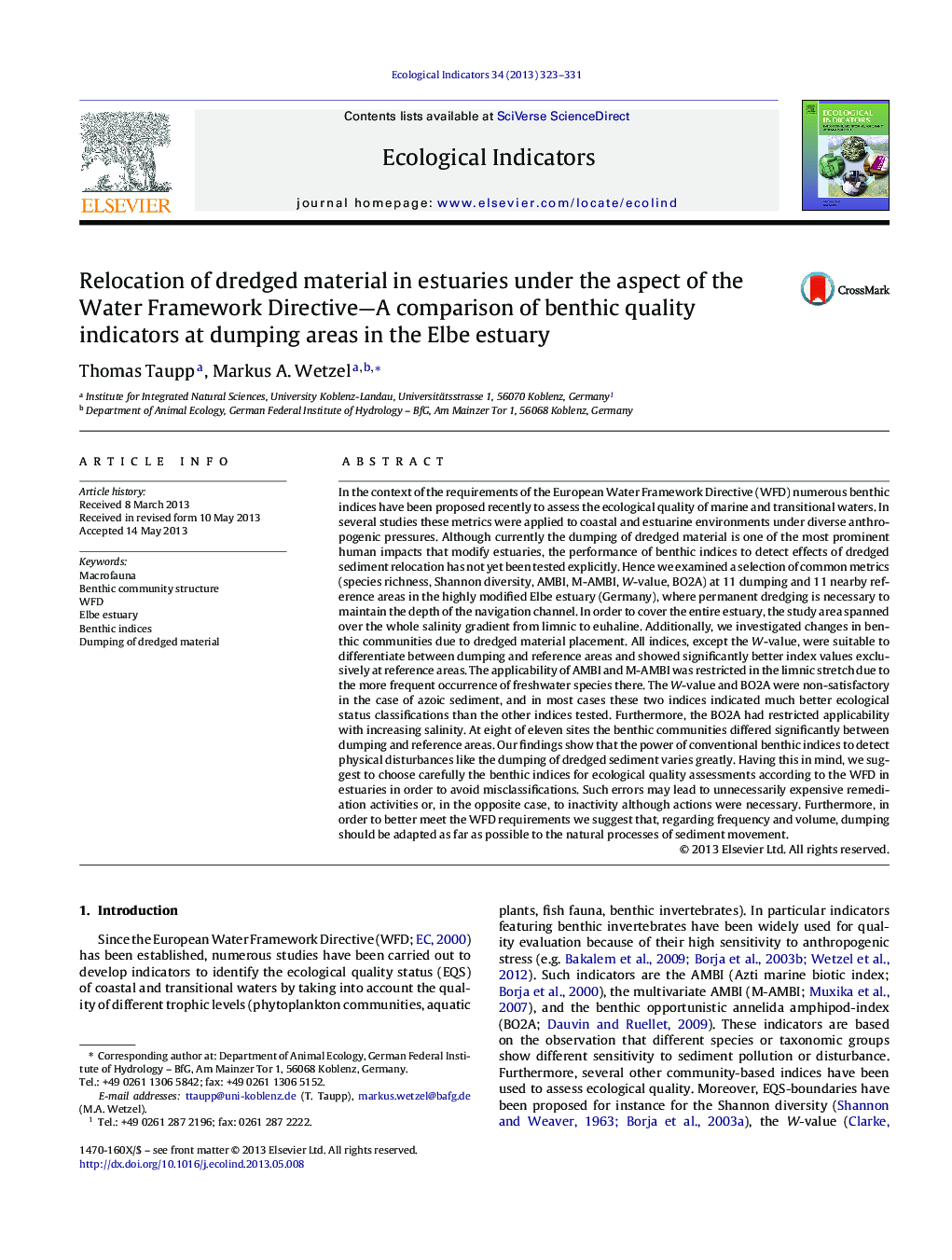| کد مقاله | کد نشریه | سال انتشار | مقاله انگلیسی | نسخه تمام متن |
|---|---|---|---|---|
| 6295286 | 1617166 | 2013 | 9 صفحه PDF | دانلود رایگان |

- Different benthic indices were applied at dumping and nearby reference areas in the Elbe estuary (Germany).
- All indices, except the W-value, were able to differentiate between dumping and reference areas and showed better index values at reference areas.
- We recommend to use species richness, Shannon diversity, AMBI, and M-AMBI to detect physical disturbances in the Elbe estuary.
In the context of the requirements of the European Water Framework Directive (WFD) numerous benthic indices have been proposed recently to assess the ecological quality of marine and transitional waters. In several studies these metrics were applied to coastal and estuarine environments under diverse anthropogenic pressures. Although currently the dumping of dredged material is one of the most prominent human impacts that modify estuaries, the performance of benthic indices to detect effects of dredged sediment relocation has not yet been tested explicitly. Hence we examined a selection of common metrics (species richness, Shannon diversity, AMBI, M-AMBI, W-value, BO2A) at 11 dumping and 11 nearby reference areas in the highly modified Elbe estuary (Germany), where permanent dredging is necessary to maintain the depth of the navigation channel. In order to cover the entire estuary, the study area spanned over the whole salinity gradient from limnic to euhaline. Additionally, we investigated changes in benthic communities due to dredged material placement. All indices, except the W-value, were suitable to differentiate between dumping and reference areas and showed significantly better index values exclusively at reference areas. The applicability of AMBI and M-AMBI was restricted in the limnic stretch due to the more frequent occurrence of freshwater species there. The W-value and BO2A were non-satisfactory in the case of azoic sediment, and in most cases these two indices indicated much better ecological status classifications than the other indices tested. Furthermore, the BO2A had restricted applicability with increasing salinity. At eight of eleven sites the benthic communities differed significantly between dumping and reference areas. Our findings show that the power of conventional benthic indices to detect physical disturbances like the dumping of dredged sediment varies greatly. Having this in mind, we suggest to choose carefully the benthic indices for ecological quality assessments according to the WFD in estuaries in order to avoid misclassifications. Such errors may lead to unnecessarily expensive remediation activities or, in the opposite case, to inactivity although actions were necessary. Furthermore, in order to better meet the WFD requirements we suggest that, regarding frequency and volume, dumping should be adapted as far as possible to the natural processes of sediment movement.
Journal: Ecological Indicators - Volume 34, November 2013, Pages 323-331